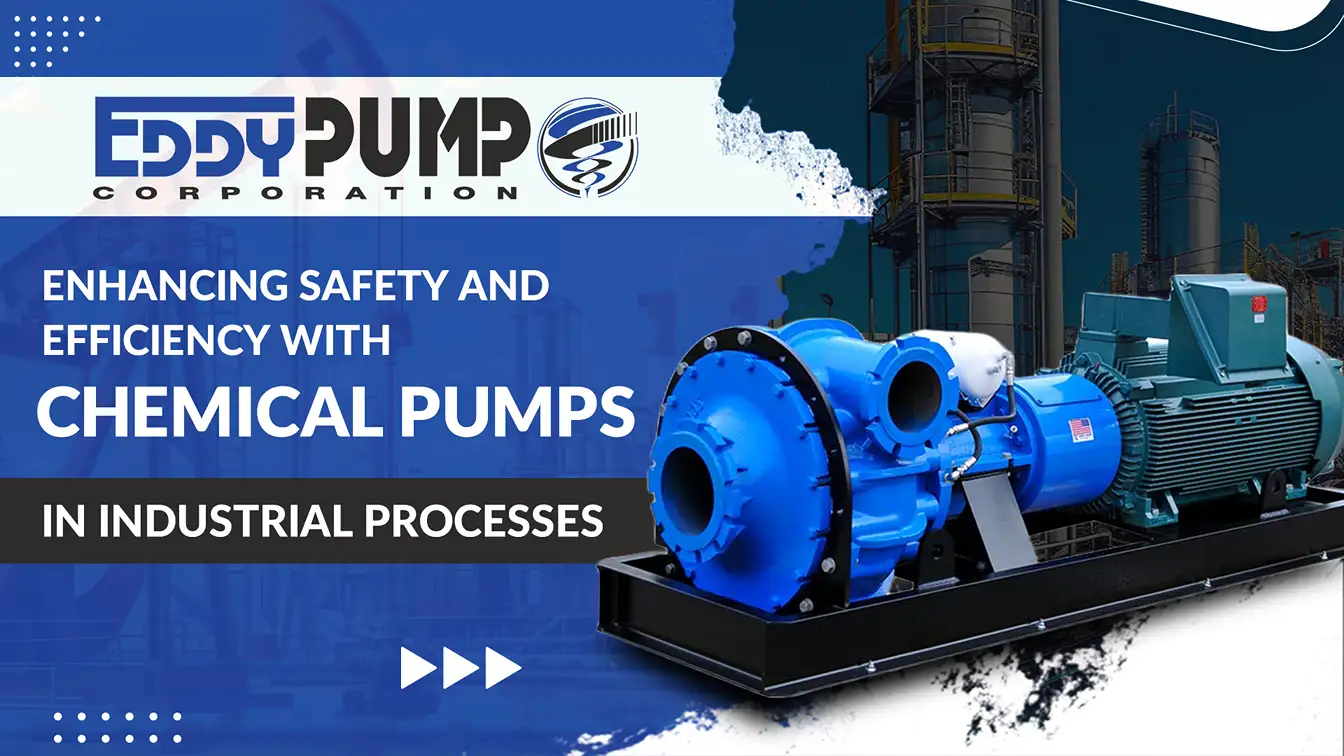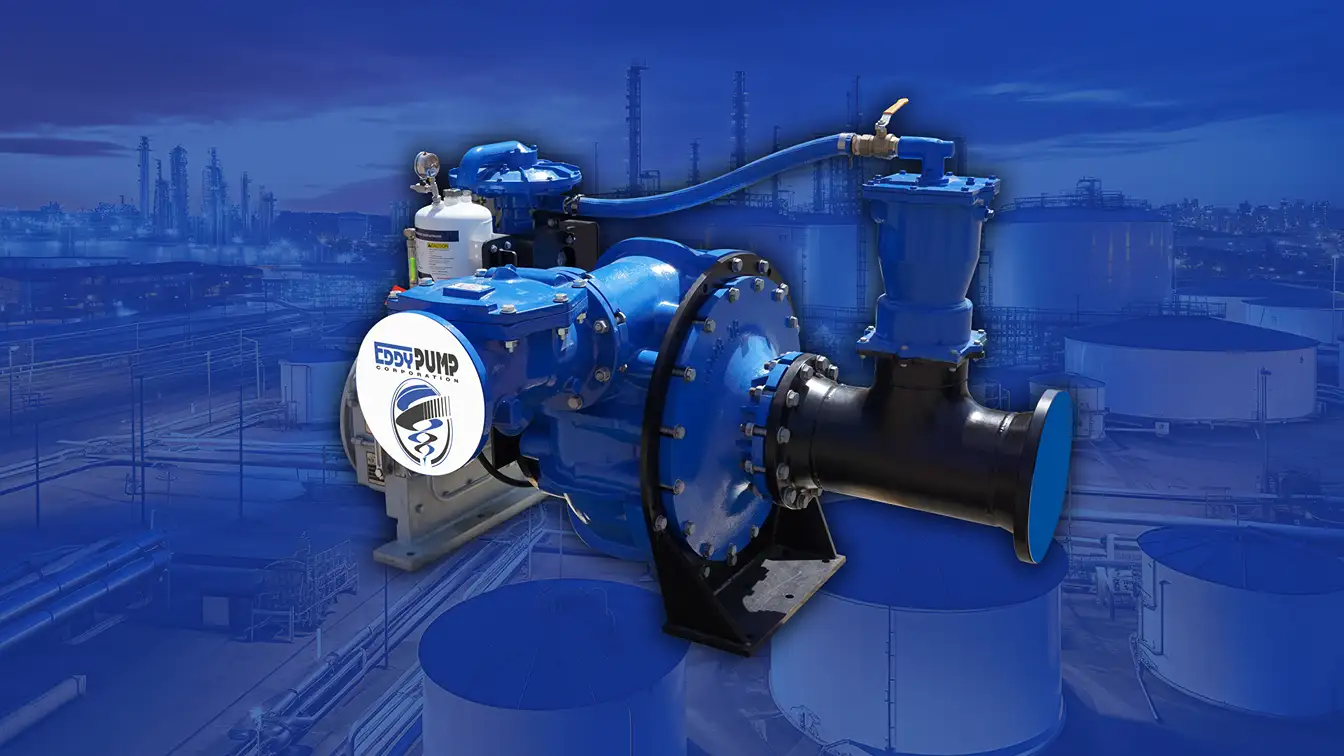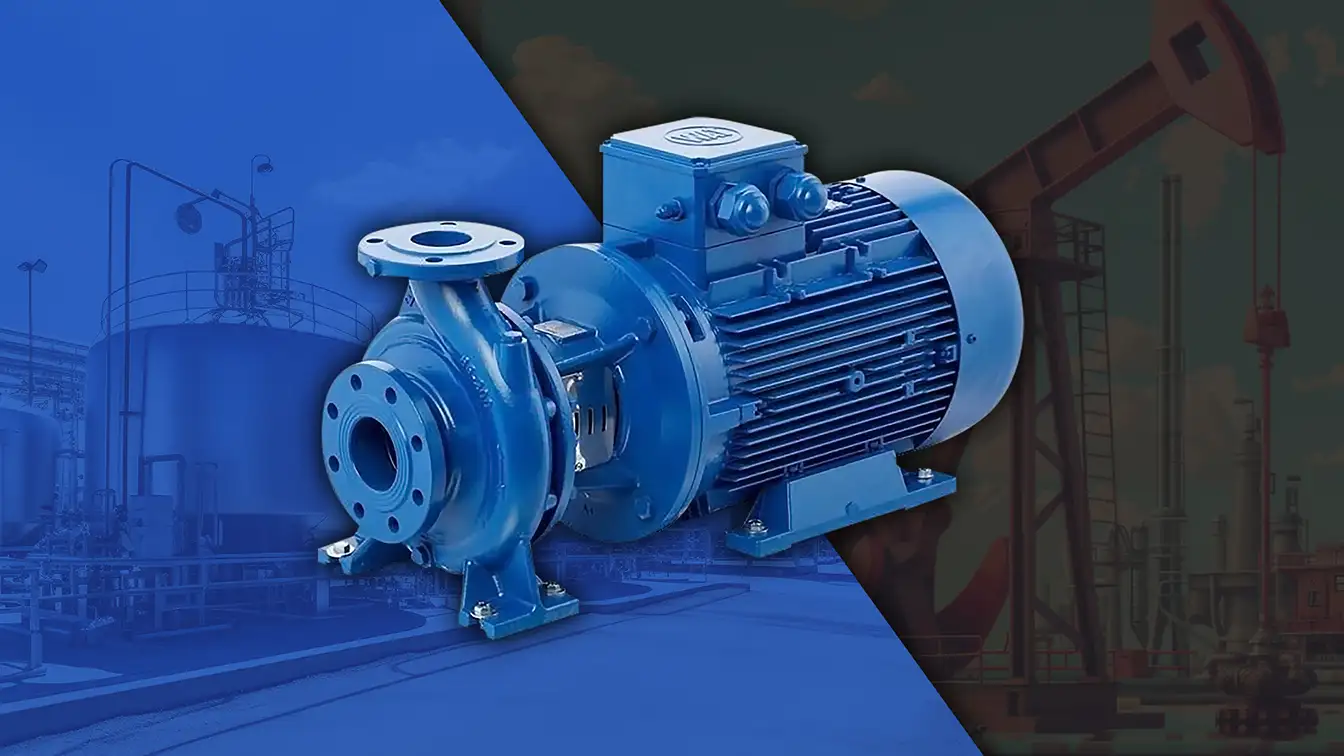
Safety and efficiency are paramount in industrial settings. The handling and transporting of chemicals, often hazardous, require precision and reliability. Chemical pumps are crucial in achieving these objectives by safely handling and transferring dangerous materials. This blog delves into the importance of chemical transfer pumps, highlights their key features, and explores best practices and innovations that enhance safety and efficiency in industrial processes.
Importance of Chemical Pumps in Industrial Safety and Efficiency
Chemical pumps are indispensable in various industries, from pharmaceuticals and petrochemicals to food processing and water treatment. They are designed to handle corrosive, toxic, and flammable substances, ensuring their safe transfer and handling. By doing so, they protect human health and the environment while also optimizing operational efficiency. The effective use of chemical pumps directly impacts the productivity and safety of industrial operations, making them a critical component in many manufacturing and processing environments.
Understanding Chemical Pumps and Their Role in Safety
Basic Principles of Chemical Pumps
Chemical transfer pumps are specialized equipment designed to move chemical fluids from one location to another. They operate on various principles, including centrifugal, diaphragm, and peristaltic mechanisms, each suited to different applications and types of chemicals. Centrifugal pumps, for instance, are commonly used for moving low-viscosity fluids, while diaphragm pumps are ideal for handling corrosive or abrasive substances.
How They Enhance Safety in Handling Hazardous Materials
Chemical pumps are engineered to withstand the aggressive nature of chemicals, preventing leaks and spills that can cause severe harm to both humans and the environment. Their design includes features like corrosion-resistant materials and leak prevention mechanisms, which are critical in managing hazardous substances safely. These pumps ensure that dangerous materials are contained and transported without harming workers or the surrounding environment.
Regulatory Standards and Compliance
Regulations such as OSHA, EPA, and REACH set stringent guidelines for chemical handling to ensure worker safety and environmental protection. Chemical transfer pumps are designed to meet these standards, ensuring that industrial processes remain compliant. Adherence to these regulations prevents accidents and avoids legal repercussions and potential fines. Companies that follow these standards demonstrate their commitment to safety and environmental responsibility.

Key Features of Safe Chemical Pumps
Corrosion-Resistant Materials
Chemical pumps must be constructed from materials that can resist the corrosive effects of the chemicals they handle. Common materials include stainless steel, Hastelloy, and various high-grade plastics. These materials ensure longevity and reliability, even when pumping highly aggressive chemicals. Corrosion resistance is vital for maintaining the pump’s integrity and preventing chemical reactions that could compromise safety.
Leak Prevention Mechanisms
Preventing leaks is paramount in chemical pumping. Advanced sealing technologies, such as double mechanical seals and magnetic drives, ensure tight containment of hazardous chemicals. These mechanisms are crucial for maintaining a safe working environment and preventing environmental contamination. Leak prevention features are designed to withstand high pressures and aggressive chemicals, ensuring the system remains secure under various operating conditions.
Automated Shut-Off and Emergency Features
Safety features such as automated shut-off valves and emergency stop mechanisms are integrated into chemical transfer pumps to mitigate risks in case of system failures. These features detect abnormal operating conditions and automatically shut down the pump to prevent accidents and equipment damage. Automated systems enhance operational safety by providing immediate responses to potential hazards, reducing the likelihood of accidents.
Chemical Transfer Pumps: Ensuring Safe Handling of Chemicals
Role in Safe Chemical Transfer
Chemical transfer pumps are designed to move chemicals safely from one container to another. Their design features and operational protocols are crucial for maintaining safety during transfer operations. These pumps ensure that chemicals are transferred efficiently without spillage, minimizing exposure risks. Chemical transfer pumps are essential for various applications, including transferring chemicals from storage tanks to processing units, ensuring the process is controlled and safe.
Design Features for Safety
To ensure safe and effective chemical transfer, chemical transfer pumps incorporate flexible connections, anti-static hoses, and secure mounting systems. These features help prevent leaks and spills, providing an additional layer of safety during transfer operations. Flexible connections allow for movement and adjustment without compromising the system’s integrity, while anti-static hoses prevent static electricity buildup, which can be a significant hazard when handling flammable chemicals.
Best Practices in Chemical Transfer
To ensure safe chemical transfer, it is essential to follow best practices. Proper training, adherence to safety protocols, and regular equipment inspections are vital. Operators should be well-versed in handling chemicals and using the pumps correctly to avoid accidents and ensure smooth operations. Implementing standardized procedures for chemical transfer can reduce the risk of human error and enhance overall safety. Regularly scheduled inspections and maintenance ensure that the equipment is in optimal condition and that potential issues are promptly addressed.

High-Pressure Chemical Pumps: Balancing Efficiency and Safety
Applications Requiring High Pressure
Specific industrial applications require high pressure to move chemicals efficiently. High-pressure chemical pumps are used in petrochemicals, pharmaceuticals, and wastewater treatment industries. These pumps must balance efficiency with safety to handle high pressures without compromising the system’s integrity. High-pressure applications often involve the transfer of viscous or heavy fluids, requiring pumps that can generate sufficient force to move the chemicals without causing damage or creating safety hazards.
Safety Features in High-Pressure Pumps
High-pressure chemical pumps have safety valves, pressure relief systems, and robust construction materials to ensure safe operation. These features help manage the high pressures involved, preventing equipment failure and ensuring the secure handling of chemicals. Pressure relief systems are designed to release excess pressure safely, avoiding catastrophic failures that could lead to leaks or explosions. The robust construction materials ensure that the pumps can withstand the stresses of high-pressure operations, maintaining their structural integrity and preventing leaks.
Operational Guidelines for High-Pressure Systems
To operate high-pressure chemical pumps safely, following manufacturer guidelines, performing regular maintenance, and monitoring system pressures closely are crucial. Operators should be trained to recognize signs of potential issues and know how to address them promptly. Regular monitoring and maintenance help identify wear and tear or potential failures before they become serious problems, ensuring continuous, safe operation.
Improving Efficiency with Chemical Pumps
Design Features that Enhance Efficiency
Chemical transfer pumps achieve efficiency through innovative design and proper selection based on application needs. Features such as variable frequency drives (VFDs), optimized impeller designs, and advanced materials contribute to their efficiency. These features reduce energy consumption and operational costs, making processes more sustainable. VFDs allow for precise control of pump speed, optimizing energy use and reducing wear and tear on the pump. Optimized impeller designs improve fluid flow, reducing resistance and enhancing overall efficiency.
Importance of Proper Pump Selection
Selecting the right high-pressure chemical pump for the specific chemical and application is crucial for achieving optimal performance and efficiency. Chemical compatibility, flow rate, and pressure requirements must be considered to ensure the pump operates efficiently and safely. Proper pump selection involves understanding the characteristics of the chemical being pumped and the operational requirements of the application. This lets the pump handle the chemical without degradation and operate within the desired parameters.
Impact of Pump Efficiency on the Overall Process
Efficient high-pressure chemical pumps reduce downtime, lower maintenance costs, and enhance the overall productivity of industrial processes. By improving efficiency, industries can achieve significant cost savings and reduce their environmental footprint. Efficient pumps also reduce the risk of mechanical failures, which can cause costly interruptions and safety hazards. The overall impact of efficient chemical transfer pumps is a more reliable and sustainable operation, benefiting both the environment and the bottom line.

Installation and Maintenance Best Practices
Correct Installation Procedures for Safety and Efficiency
Proper installation is critical for the safe and efficient operation of chemical pumps. Following manufacturer instructions, ensuring correct alignment, and using appropriate fittings are essential. A proper installation can lead to leaks, equipment damage, and reduced efficiency. Adequate installation involves careful planning and execution, ensuring all components are correctly positioned and securely connected. This minimizes the risk of leaks and ensures the high-pressure chemical pump operates as intended.
Routine Maintenance Tasks
Regular inspection, cleaning, and replacement of worn parts are necessary to maintain pump performance and safety. Routine maintenance tasks help identify potential issues early, preventing major failures and ensuring continuous safe operation. Maintenance schedules should be based on manufacturer recommendations and tailored to the pump’s operating conditions. Regularly scheduled maintenance helps extend the pump’s lifespan and ensures it continues operating efficiently and safely.
Identifying and Addressing Common Issues
Common issues with chemical pumps include leaks, unusual noises, and performance drops. Early detection and promptly addressing these issues can prevent accidents and ensure the pump continues operating efficiently and safely. Operators should be trained to recognize the signs of common problems and know how to address them effectively. This includes understanding the causes of these issues and implementing corrective actions to prevent recurrence.
Training and Skill Development for Safe Operations
Importance of Operator Training
Operator training is crucial for ensuring the safe handling of chemical transfer pumps and maintaining high safety standards in industrial processes. Well-trained operators can identify potential hazards, perform necessary maintenance, and respond effectively to emergencies. Training programs should be comprehensive, covering all aspects of pump operation, safety protocols, and emergency procedures. This ensures operators are fully equipped to handle the challenges of working with high-pressure chemical pumps.
Key Areas of Focus in Training Programs
Training programs should cover pump operation, safety protocols, emergency procedures, and routine maintenance. Operators should have the knowledge and skills to handle chemical pumps safely and efficiently. Key focus areas include understanding the specific characteristics of the chemicals being pumped, recognizing the signs of potential issues, and knowing how to address them effectively. Training should also emphasize the importance of regular maintenance and adherence to safety protocols.
Resources for Continuous Learning
Access to updated manuals, online courses, and industry seminars helps operators stay informed about the latest safety practices and technological advancements. Continuous learning is essential for maintaining high safety standards and keeping up with industry developments. Companies should invest in ongoing training and development programs, providing operators with the resources to stay current with best practices and emerging technologies.

Innovations in Chemical Pump Technology for Safety
Intelligent Pumps and Real-Time Monitoring
Technological advancements are continuously improving the safety and efficiency of chemical transfer pumps. Smart high-pressure chemical pumps with sensors and real-time monitoring systems can detect anomalies, predict maintenance needs, and enhance safety. These pumps provide valuable data that can be used to optimize operations and prevent accidents. Real-time monitoring allows for immediate detection of issues, enabling operators to respond quickly and effectively. This reduces the risk of accidents and ensures that the pump operates efficiently.
Advances in Materials for Enhanced Safety
Innovative materials such as advanced polymers and composites improve corrosion resistance and durability, improving pump safety. These materials ensure that chemical pumps can handle aggressive substances without deteriorating, extending their lifespan and reliability. Advances in materials science have led to the development of new compounds that offer superior performance and resistance to chemical attack, making pumps safer and more durable.
Future Trends in Safety Technology
Emerging technologies such as IoT integration and advanced analytics are set to revolutionize the safety features of chemical pumps. IoT-enabled pumps can communicate with other systems, providing real-time data and alerts to operators. Advanced analytics can predict potential issues before they occur, allowing for proactive maintenance and improved safety. These technologies offer new levels of control and insight, enabling operators to optimize performance and enhance safety.
Conclusion
Summary of Safety and Efficiency Enhancement Techniques
Chemical pumps are integral to enhancing safety and efficiency in industrial processes. Effective use of chemical transfer pumps, coupled with proper installation, maintenance, and operator training, ensures safe and efficient operations. Embracing chemical pump technology innovations will further drive safety and performance advancements. Companies can improve safety and efficiency by following best practices and leveraging new technologies.
Final Thoughts on the Importance of Chemical Pumps
Chemical pumps are not just equipment; they are essential safeguards that protect workers, the environment, and the integrity of industrial processes. Their role in safely handling and transferring hazardous materials cannot be overstated. Investing in high-quality chemical pumps and maintaining rigorous safety standards is crucial for any industry that handles hazardous materials.
In conclusion, chemical transfer pumps are vital for maintaining safety and efficiency in industrial processes. Industries can significantly improve operational safety and efficiency by understanding their features, selecting the right pump, and adhering to best practices. Embracing innovations in chemical pump technology will further drive advancements in safety and performance, ensuring a safer and more efficient future for industrial operations.
